Similar Styles of Dress Throughout History
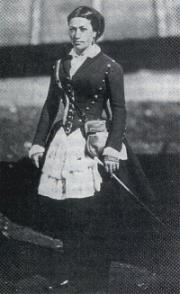
(Courtesy of National Army Museum)
Click on the picture above to see more images of French Vivandieres and Cantinieres!
Vivandieres and cantinieres, such as the woman pictured above, had been components of the French military for several centuries. Both vivandieres and cantinieres were attached to specific regiments and held duties that combined the roles of sutler, nurse, cook, and laundress. The only difference between the two titles was that vivandieres were seen on the battlefields following the men, and cantinieres stayed back in the military camps. Military regulations of 1854, however, replaced the title of vivandiere with that of cantiniere. Their uniforms were based on the men's military uniforms, with the exception of the shortened skirt and other added feminine trims. The shortened skirt was not only more practical for the woman to perform her duties, but it also made her gender more apparent.

(Courtesy of Mount Holyoke College Archives)
Just as hydropathists were concerned with health reform, the average woman became more aware of her physical well-being. Physical education classes were soon incorporated into the curriculums of many schools. As a result, some of the first "gym suits" for women were designed similarly to the rational dress. The picture above shows Mount Holyoke College's gymnastics team from 1865.
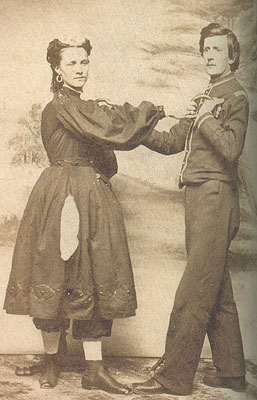
(Courtesy of Catherine Smith, co-author of Women in Pants, Harry N. Abrams, Inc., Publishers)
Here is another image of a woman wearing her gymnast uniform, c. 1864-65.
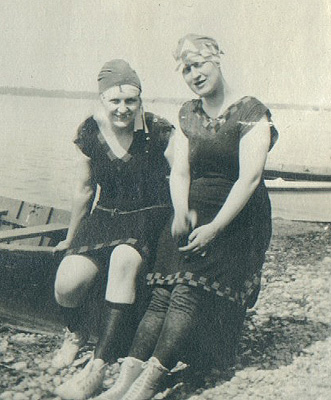
(Courtesy of the Webmaster's collection)
Women's swim dress throughout the nineteenth century had a similar look to reform dress. Some of the earlier swim dresses consisted of pantaloons and a frock or dress with a shortened skirt. By the turn of the twentieth century women's swim wear was designed with shorter sleeves, shorter skirts, and lower neck lines. The picture above represents a typical bathing suit from 1916 (the woman on the left being my Great Aunt Flo).

(Courtesy of Rational Dress Reform web site)
By the turn of the late nineteenth century women's cycling dress also began to be designed with pantaloons and shortened skirts. The woman pictured above is Lady Harberton.
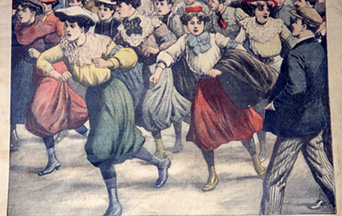
(Courtesy of the Webmaster's collection)
The women depicted in this illustration from the cover of the November 8, 1903 issue of Le Petit Journal were known as the "Midinettes." They ran in a race through the streets of Paris one afternoon in 1903. Notice that all of them are wearing pants!

(Courtesy of the North Central College Archives)
This photograph shows the girls' sophomore basketball team of North Central College, Illinois (the webmaster's alma mater) wearing their uniform of "black bloomers" in 1912. Notice the dog, which is the team's mascot.
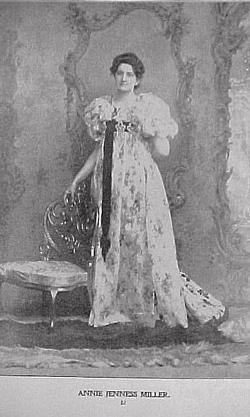
(Courtesy of the Webmaster's collection)
At the end of the nineteenth century a new style of reform dress began to take hold-- the "artistic dress." Based on thirteenth century and classical Greek garments, the flowing robes, trailing skirts, and tight sleeves of the dress appeared similar to those of the ladies in pre-Raphaelite paintings. the goal of the "artistic dress" was to allow for greater freedom in movement while at the same moment enhancing the beauty of the wearer. The woman pictured above, Annie Jenness Miller, promoted the style through her magazine, books, and lectures.
Back to

Copyright 2002 by Britta Arendt